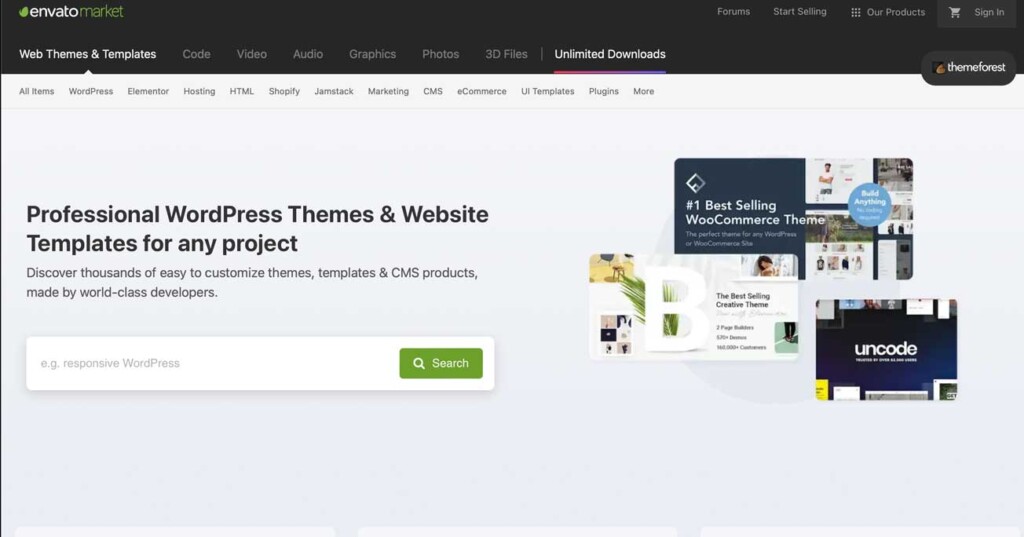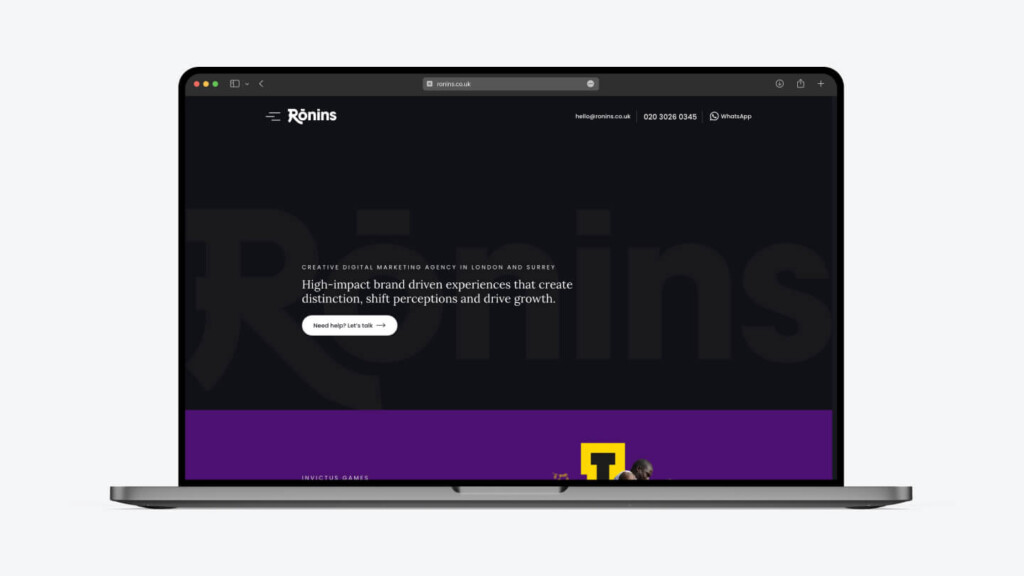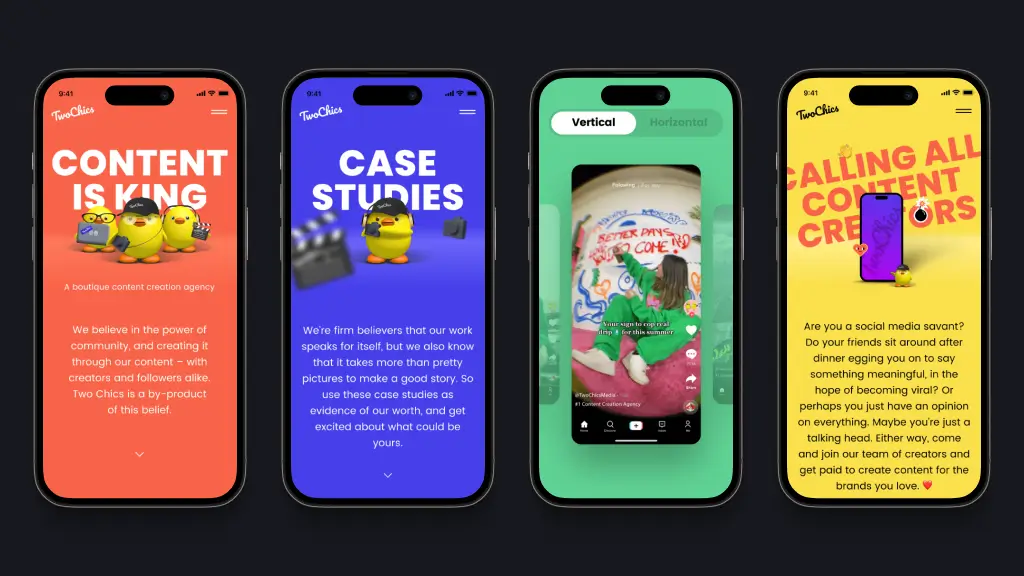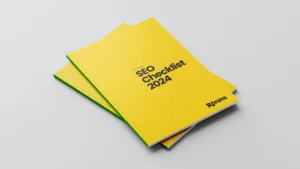
What Is Bespoke Web Design
Table of Contents
TLDR
Most websites look fine. But fine doesn’t convert. Fine doesn’t scale. Fine doesn’t move revenue.
This article breaks down why template websites , even the nice ones, quietly cost more in rebuilds, performance drag, and missed opportunity. And why bespoke web design isn’t just about visual polish , it’s about building an asset that aligns with your business model, adapts as you grow, and converts faster because it’s designed that way.
We cover:
- Why “good enough” websites fail when your offer evolves
- How structure, not styling, drives conversion and trust
- What makes bespoke platforms scale-ready and revenue-aligned
- Where templates collapse under complex features, integrations, and UX
- How SEO, performance, and user journeys improve when you build intentionally
If your site isn’t helping you sell, scale, or stand out, it’s not serving you.
Bespoke isn’t for everyone. But if you’ve outgrown the template, it’s time to build properly.
• • •
• • •
Redefining Bespoke: What Is Bespoke Web Design Today?

Ask ten people what is bespoke web design, and most will talk about layouts, fonts, or maybe a few personalised graphics. But that’s not bespoke. That’s branding with training wheels.
Bespoke web design is a commercial decision. It’s about building infrastructure, not just interfaces. Done properly, it gives you speed, control, and clarity at the moments that matter. Not because it looks good, but because it moves people, supports business logic, and adapts when things change.
I once had a founder say, “We thought we needed a site. What we actually needed was a system.” That’s it. That’s the pivot point.
A bespoke website design isn’t about standing out. It’s about building something that fits, tightly. Around your brand, your business model, your real-world constraints. Something that runs cleanly across your stack and doesn’t fall over when you add new functionality.
Too many businesses mistake presentation for performance. But a site that looks slick and loads slow? Or a page that’s pretty but doesn’t convert? That’s not digital strategy, that’s just surface.
The value of bespoke is that it makes room for nuance. You get to control how users engage, what they see, and how that experience shifts based on their intent. You’re not following someone else’s idea of best practice, you’re designing for your own edge.
It also gives your team control. When we create a bespoke web platform, we’re not just building something elegant, we’re making it maintainable. Scalable. Editable by your own people. You’re not calling devs every time you want to tweak a headline. That’s real value.
Because here’s the reality: If your website isn’t built to grow your business, it’s not an asset, it’s overhead. And you’ll know the difference the moment your traffic climbs, your product line expands, or your strategy shifts. At that point, the site either flexes or fractures.
Bespoke isn’t about more, it’s about less, but better. Less waste. Less workarounds. Fewer limitations. And a tighter alignment between what you need and what your users experience.
• • •
The Illusion of Cheap: Why Templates Cost More Than You Think

Templates look like a shortcut. Fast, affordable, “good enough for now.” And that’s the trap.
Most businesses that go with template website design don’t realise what they’re signing up for: limitations, compromises, and a rebuild 12 months later. The upfront cost might feel lighter, but the long-term expense, financial and strategic, is far heavier.
A templated website is built for general use. Yours isn’t a general business.
The problem? Every time you try to change something, you’re working against the framework instead of with it. You’re hacking layouts. Finding plugins. Writing workaround copy to fit rigid design blocks. And every change adds friction, cost, complexity, risk. Eventually you stop evolving the site because changing anything feels like opening a trapdoor.
We’ve seen it time and again: leaders stuck with an off the shelf platform, trying to bolt on features the system was never built to support. It’s exhausting.
Off the shelf solutions are built for speed and scale, but someone else’s. Not yours. Not your market. Not your way of working.
And there’s a hidden cost: perception. Users don’t need to know your site is templated. They can feel it. From clunky navigation to recycled UI, it all adds up. You’re not invisible, you’re forgettable.
Behind the scenes, your team suffers too. Page edits take longer. The site slows down. New features break old ones. Internal requests get backlogged. The friction multiplies.
You also inherit someone else’s generic templates, full of bloated CSS, excess JavaScript, and assets you don’t use. That bloated stack? It extends development time, inflates maintenance costs, and quietly wrecks your performance metrics.
One of the most overlooked issues is website content flexibility. If your product offering shifts, your positioning changes, or you enter a new market, you often need to rewrite and rewire everything. That’s when the “cheap” site gets expensive.
A smart business doesn’t treat its site like a static brochure. It treats it like part of its engine. And an engine built for someone else’s car will never run right in yours.
If your business operates online, your website isn’t just a touchpoint, it’s a growth platform. So you can choose fast and fragile, or slow and scalable. But pretending both live in a £50 theme is wishful thinking.
• • •
Flexibility by Design: Built to Scale as You Grow

Every founder hits this point: the business evolves, but the website doesn’t. Maybe it’s a product pivot, a new audience, or a bigger sales team. And suddenly, your platform starts showing its cracks.
This is where bespoke websites pull ahead. They’re not just custom, they’re composable. Structured to scale, modular by nature, and ready for complexity the moment it arrives.
“If your site can’t flex when the business does, it’s a liability. Not a tool.”
One of the biggest myths in digital is that bespoke design is about surface polish. It’s not. The value is structural. A bespoke system is shaped around how your team works, how your users buy, and how your roadmap will evolve. Not how a template was meant to function.
We recently rebuilt a legacy B2B site for a client whose product team had outpaced the platform. They needed to roll out gated assets, segmented funnels, and multi-region pricing. Their original system had none of it. With a clean bespoke build, we gave them the flexibility to ship fast, test faster, and personalise on demand.
The truth is, most websites aren’t failing because they’re ugly, they’re failing because they’re rigid.
When you go the custom design route, you’re not locking in a style. You’re building in adaptability. You can add components, repurpose content, tweak journeys, and optimise flows, all without breaking structure or begging your dev team for favours.
That’s what makes the ROI stack up. As your business grows, the platform grows with you. Not around you. Not in spite of you.
“Don’t build for where you are. Build for where you’re going.”
And if you want that growth to be sustainable, you need more than flexible code, you need flexible thinking. That’s where we come in.
We often design for clients we know will grow alongside us, series-A tech companies, challenger brands, bold independents. People who need a system that can change without collapsing.
Because your site isn’t just a marketing tool. It’s the backbone of your operation. It speaks to clients, serves as your conversion engine, and often carries your revenue infrastructure. And if your business is dynamic, your tech stack better be too.
If your platform can’t evolve, it’s already obsolete.
• • •
Engineered for Trust: Why First Impressions Really Do Convert

Before anyone reads a line of copy or scrolls past the hero section, they’ve already made a decision: trust, or bounce.
In digital, trust happens in milliseconds, and most businesses waste that window. They bury their value proposition under noise, slow loading, and generic styling. That’s where a beautiful website fails: it looks good, but it doesn’t work.
“First impressions aren’t made by design. They’re made by clarity.”
Speed, structure and message hierarchy beat motion graphics every time. We’ve seen sites with slick animations and poor load speed underperform dramatically. Why? Because people don’t have patience, and neither do algorithms.
When we design, we don’t aim for ‘wow.’ We aim for “I get it.” That’s the moment trust kicks in. And trust drives action.
It starts with a clean user interface. One that reflects your offer without distraction. One that guides, not shouts. In high-conversion sites, this isn’t accidental, it’s architected.
And it’s not just visual. To feel intuitive, your site must be specifically designed for your audience’s context: their questions, expectations, and readiness to act.
Take brand elements. Used well, they reinforce recognition and consistency. Used carelessly, they dilute focus. The goal is signal, not decoration.
“The best UX isn’t noticed. It’s felt.”
Every user journey we map is built to remove friction. That means fast pathways to value, sharp CTAs, and minimal noise. If something’s not pulling its weight, we strip it.
And when you get it right, it supports both user action and internal momentum. Because the site isn’t just for customers, it’s for your team, your sales pipeline, and your analytics stack.
When your business needs shift (and they will), you shouldn’t have to rebuild. That’s why we design for modularity. You can swap sections, reframe pages, or test variations, without breaking the structure.
Great UX also feeds your seo performance. A smart layout, solid hierarchy, and fast experience increase engagement, reduce bounce, and tell search engines your content deserves to rank.
Finally, everything we do is anchored to one simple principle: serve your target audience better than your competitors do. Because if your website doesn’t do that, the rest doesn’t matter.
Performance Built In: How Bespoke Supports Revenue and Retention

A website doesn’t need to win awards. It needs to win business.
The most successful platforms we’ve built aren’t the flashiest. They’re the ones where users get what they need quickly, clearly, and without friction. That’s what drives conversion. And that’s what a smart web design should do.
“Design isn’t about how it looks. It’s about how well it sells.”
Let’s say you’re launching a new website. The default path is to build what looks good in the pitch deck. But what actually works? Design that aligns with real-world decisions, journeys, and objections. That’s why we design backwards, from the goal, not the homepage.
Take features. Most businesses list them. Great sites demonstrate them, visually, interactively, in context. The goal is not just clarity, it’s conviction. Why should a user act now?
We helped a client optimise their sales funnel by rethinking how their drive traffic strategy connected with their landing experience. We cut steps, clarified value props, and aligned messaging across channels. Conversions doubled. Same ad budget, better architecture.
Bespoke also means you can build infrastructure to support selling products, not just displaying them. Think: product filtering, comparisons, frictionless checkout, intelligent upsells.
“Function beats fancy. Every time.”
A custom platform also means you can respond to what the data tells you. If users drop off at step three, we don’t guess, we rebuild the interaction. That’s how you earn more visitors and keep them moving.
Speed matters too. Every second saved lifts conversion. Every delay loses intent. It’s why we audit every interaction across device types and screen sizes to ensure increased efficiency. Because experience isn’t a desktop luxury anymore, it’s mobile-first, real-time, always-on.
“If your site doesn’t work under pressure, it doesn’t work.”
For businesses selling across multiple markets, payment types, or channels, the experience must work seamlessly across different devices. That’s not a bonus, it’s the baseline.
Retention comes from trust. Conversion comes from ease. Revenue comes from both.
• • •
Bespoke = Better SEO, Not Just Better Looks

’You can have the most compelling offer in the world, but if nobody finds your site, it doesn’t matter. This is where the real value of a bespoke build starts paying off. It’s not just about looking sharp. It’s about being findable, indexable, and worth ranking.
Most businesses still think of search engine optimisation as keywords and blogs. But technical SEO is often the difference between visibility and obscurity. It’s architecture. Load time. Clean code. Structured content.
Templates often come bloated, with code written for 300 different use cases, 90 of which aren’t yours. That slows down the site, confuses search engines, and compromises your ability to optimise.
“Great SEO starts with how you build, not what you publish.”
With a bespoke build, we optimise from the ground up. That includes everything from schema markup to crawl logic to structured heading hierarchies. It’s not just surface polish. It’s under-the-hood precision.
Every project starts with a strategic approach. That might mean auditing current performance, mapping technical gaps, or identifying what content deserves to rank and what needs a rethink.
And once you start aligning your digital marketing strategy with your technical foundation, you stop fighting your platform. You start using it as a multiplier.
A smart website design also allows us to connect UX and SEO more deliberately. Pages aren’t just designed for aesthetics, they’re structured for scan-ability, relevance, and engagement. This reduces bounce, improves dwell time, and boosts organic performance over time.
One advantage of working with a proper web design agency is that we’re not just making things look nice. We’re designing for the way people (and search engines) think.
We build in custom built layouts, modular content types, and reusable structures so that teams can scale content fast, without sacrificing consistency or performance.
“If you’re bolting SEO on after launch, you’re already late.”
And it’s not just about search. A well-structured content management system gives marketers speed and flexibility, while keeping the tech stack clean. You don’t need to code every page. But you do need to control every headline, CTA, and internal link.
That’s the power of a custom built website. It doesn’t just express your brand. It fuels your growth.
• • •
Built With You: The Power of Collaborative Process

Bespoke doesn’t mean “built for you.” It means built with you. And that changes everything.
Most businesses that go bespoke for the first time are surprised by how involved they get. Not in the pixel-pushing sense, but in the clarity it demands. Done right, a bespoke process forces decisions: Who are we building for? What matters most? What’s noise?
“If the process feels too easy, you’re probably not getting what you need.”
That’s why great bespoke web design projects are never off-the-shelf builds. They’re co-created. Shared vision, shared accountability. It’s not about a brief. It’s about alignment.
Our best projects don’t start with solutions, they start with dialogue. Real, sometimes uncomfortable conversations about goals, gaps, and future stretch. That’s where trust forms, and strategy sharpens.
In this space, the collaborative process matters more than deliverables. Because a great site isn’t built in isolation. It’s pressure-tested. By your team, your users, your roadmap. That’s how we spot what matters before it’s too late to change it.
Sometimes, that means questioning what you think you need. We had one client who wanted a bespoke WordPress theme and left with a modular headless CMS, and a 3x lift in lead flow. Why? Because we didn’t just follow orders. We asked better questions.
That kind of shift starts with in depth research. Understanding not just your business, but your buyer. Their moments of hesitation. Their urgency. Their behaviours. Templates don’t account for any of that.
“You can’t outsource clarity. You have to earn it.”
The best web developers don’t just write clean code, they anticipate friction. They understand brand hierarchy, content strategy, and how to translate vision into scalable patterns.
A bespoke site also makes development work feel less like a backlog and more like a growth lever. You’re not hacking in fixes, you’re making decisions on your terms, at your pace.
And when your team owns the back end, they make smarter moves on the front end. No dependency on developers for every tweak. No mystery code. Just usable, scalable tools built around your real business goals.
Because when we provide support, we’re not just fixing bugs, we’re helping you move forward. Faster, clearer, and without being held hostage by your tech stack.
That’s the power of true bespoke: strategy up front, control in the middle, confidence at the end.
• • •
Function Over Flash: Tailoring Features That Actually Work

Design gets the spotlight, but it’s functionality that carries the load.
We’ve seen too many businesses try to shoehorn complex processes into template structures. The result? Broken flows, workarounds, lost leads, and confused users. That’s not transformation, it’s tech debt in disguise.
“If your platform doesn’t reflect how your business works, it’s friction by design.”
When we talk about building specific features, we’re not talking wishlist items. We’re talking business logic: pricing models, custom workflows, calculators, integrations. The operational things that templated systems can’t support, or break trying.
And when you add complexity, subscriptions, memberships, conditional logic, multi-language layers, tiered pricing, templates fold. Fast.
Bespoke design lets you start from structure. The right payment rules. The right data flow. Seamless integrations with payment gateways or CRMs. No hacks. No bolted-on plugins.
That’s the real power of a custom website, you’re not guessing whether something will work. You’re building it to fit. And when a system fits tightly around your offer, conversion climbs and complaints vanish.
One founder came to us after trying to retrofit a referral engine into a rigid CMS. We scrapped it and rebuilt the platform as a tailor made experience, with measurable gains in retention and word-of-mouth traffic.
The difference between good and great often comes down to these moments: architecture, not aesthetic.
“A truly bespoke website doesn’t just match your brand. It mirrors your model.”
That’s why custom web development matters. It’s not just about writing code, it’s about creating systems that work how you do. Systems your team can trust. Your ops team can scale. And your customers can rely on.
When done right, even complex flows feel simple. That’s what users remember. And that’s what gives you an edge when the next competitor launches looking shiny but acting clunky.
Bespoke platforms also support a unique design, something no one else has. Not just in look, but in behaviour. Every animation, interaction, and transition is shaped around your value, not someone else’s template.
“If your features don’t convert, they’re noise.”
When you control the logic, you control the experience. And when you control the experience, you control the outcome.
That’s bespoke. That’s what wins.
• • •
Don’t Just Launch, Build to Last

There’s a moment after go-live where most businesses pause. Site’s up. Looks great. Job done?
Not quite.
The smartest teams know that launch is just the start. Because digital isn’t static, your customers shift, your offer evolves, and your data tells you things you didn’t know at the beginning. If your site can’t adapt, it slowly becomes a blocker.
That’s why a bespoke site isn’t just a build. It’s a foundation.
“The value of a site isn’t in how it launches. It’s in how it holds up when you grow.”
Sustainable growth means investing in systems that support change. It’s why we architect every website design for evolution, not just aesthetics.
When you own the design system, the CMS, and the logic behind your flows, you’re free to move fast. You can iterate campaigns, update pages, launch products, without starting from scratch every time.
And when you need to scale content, adapt funnels, or localise experiences, you’re not restricted by someone else’s layout. You’ve got tools designed to fit you.
That’s why we start with strategic clarity and create modular systems. The site can expand, flex, and respond, without breaking style or structure.
Every brand deserves to own its platform. Not rent it.
Every site should be an engine, not a brochure.
And if your business is built for scale, your platform should be too.
Bespoke isn’t for everyone. But for those who are serious about growth, control, and margin, it’s the only rational choice. It gives you ownership, advantage, and the ability to change when your market does.
“Templates are for today. Bespoke is for what happens next.”
So if you’re looking to stop patching, stop settling, and finally invest in a digital foundation that grows with your business, this is where the conversation starts.
• • •
If You’ve Outgrown the Template, Let’s Talk
One of the most common questions businesses ask me is: “Is bespoke web design worth the higher upfront cost compared to templates?” It’s a fair question—and honestly, in our early days, even we weren’t fully convinced about investing significantly more upfront. We experimented with cheaper, template-based solutions to save costs, and yes, we learned the hard way.
Upfront Investment vs Long-Term ROI
Ready to move beyond generic templates and build a platform that actually delivers?
Whether you’re scaling fast, fixing underperformance, or preparing for what’s next, let’s build something that works.
Drop me a line if you’re ready to turn your website into an engine, not just an expense
• • •
Sources
Think with Google – https://www.thinkwithgoogle.com/marketing-strategies/app-and-mobile/mobile-page-speed-new-industry-benchmarks/
Forrester via Toptal – https://www.toptal.com/designers/ux/why-ux-matters
Stanford Web Credibility Guidelines – https://credibility.stanford.edu/
Smashing Magazine – https://www.smashingmagazine.com/
Akamai via Deloitte – https://www.akamai.com/blog/trends/akamai-s-performance-matters
Baymard Institute – https://baymard.com/lists/cart-abandonment-rate
Search Engine Journal – https://www.searchenginejournal.com/Investing strategically now means positioning your business strongly for sustained success, growth, and digital excellence.
• • •
Let’s begin your bespoke journey today.
• • •





